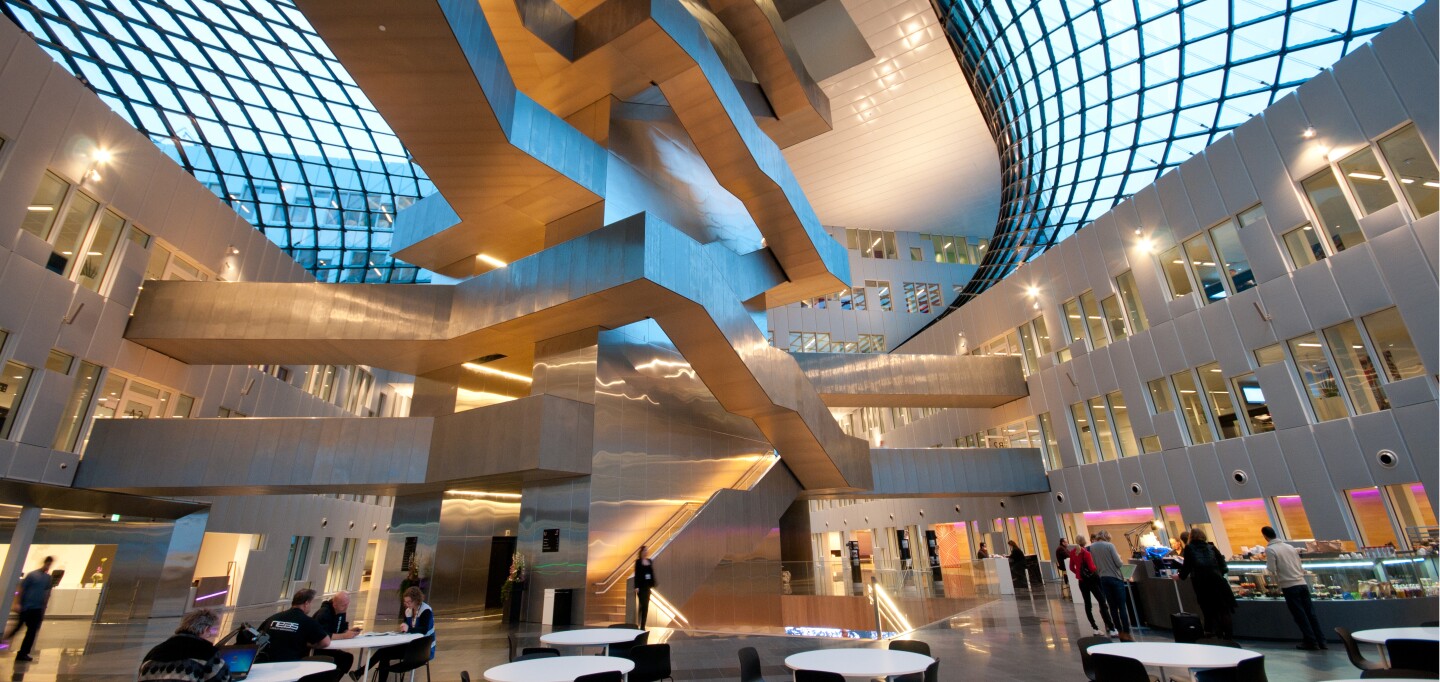Is this one of the world's best office buildings? These are the new offices of Norwegian oil and gas outfit Statoil, built at Fonebu near Oslo in Norway. The building was lauded well before its completion towards the end of 2012. In 2009 it was singled out as Future Project of the Year at the World Architecture Festival. Last year it received the Best Commercial Building prize at the World Architecture News Awards, and more recently was nominated in the Best Office & Business Development category at this year's MIPIM real estate exhibition in Cannes (where it was beaten by The Squaire in Frankfurt). So what's significant about the design?
Instead of designing a single mass, Norwegian architects A-Lab conceived an office composed of five aluminum-clad tubes, arranged horizontally in an almost slapdash pile. It may not be the most efficient use of space, but then situated near to Oslofjord it's not as if space is at a particularly high premium.
The arrangement brings with it certain inherent advantages. First, each of the five blocks has a unique orientation and view. And the space between the five blocks creates an atrium, covered by an undulating propeller-shaped glass roof. In line with popular management theory, the building is planned so that workers are ushered through the atrium as they come and go, cultivating the sort of chance encounters that we're now constantly told cultivate innovation.

Perhaps more to the point, it's really a rather nice atrium, with a striking aluminum stair tower at its center. Square-spiraling around a core, the stairway branches off this way and that, contorting like something M. C. Escher might have contrived.
A-Lab reports U-values (which are rates of heat transfer) of 0.8 W/m2K for the windows, 0.18 W/m2K for the rest of the facades, and 0.8 W/m2K for the roof. The figure for the roof is high – the cost of doing business where atria are concerned, but which may be offset by other advantages such as increased scope for natural ventilation. (For context, the admittedly exacting Passivhaus standard calls for an overall U-value of 0.15 W/m2K.)
But it all boils down to the building's eventual energy-consumption which A-Lab estimates will be 103 kWh/sq m/year, which it describes as "unusually low." Provided that covers both electricity and heating (supplied via an 85-percent efficient district scheme), that's putting it mildly, falling comfortably inside the Passivhaus requirement of 120 W/m2K.
As offices go, Statoil's HQ certainly has game. But missing from the press shots we've seen is an idea of how things are inside the office spaces themselves. You can't judge an office until you've worked in it … or at least seen some pictures. But it would very strange indeed if the HQ's abstract circulation spaces led to drab office cubicles. It seems unlikely.













